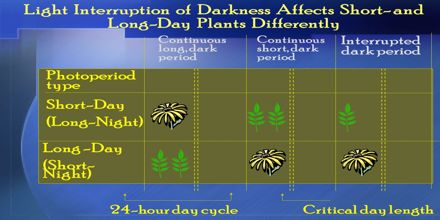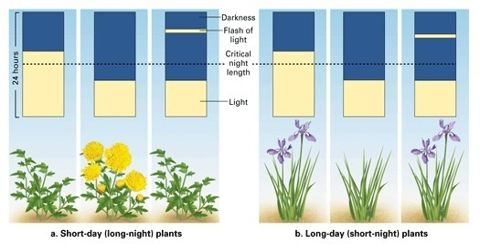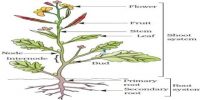Classification of flowering plants based on the length of day light. We know that the length of day and night does not remain same all year round.
Sometimes day is short and night is long. Again, sometimes day is long and night is short.
The flowing plants are divided into three different categories according to the length of day:
- Short-day plants
- Long-day plants
- Day neutral plants
Short-day plants: Plants that will not flower unless the day length is shorter than the critical length are called short-day plants.
Day becomes short when night is long; example- dark period is long. It is experimentally seen that, a definite period out of 24 hours of continuous darkness is essential in order to flower a short day plant. Those plants will not flower if the length of darkness is less than that of the particular time limit.
This short day plant will stop flowering if we supply light for a short while during the continuation of darkness. To speak the truth it will be right to call them long night plants instead of short day plants.
Examples: Mustard, soybean, potato, sugar cane, cosmos, chrysanthemum, tobacco etc.

Long-day plants: Plants that will not flower unless periods of light are longer than the critical length are called long day plants.
This length of day in the variation of plants can be about 14-18 hours. This plant, require short period of darkness in order to inmate flowering. So, long-day plants can be called short night plant.
Examples: This includes garden beets, lettuce, potatoes, spinach and wheat.
Day neutral plants: These plants initiate flowering without any influence of the comparative length of day and night. These types of plants will flower only, with the help of their essentials morphological development. These plant can be grown at different time of the year.
Examples: This includes garden beets, calendulas, sunflower, paddy etc.













